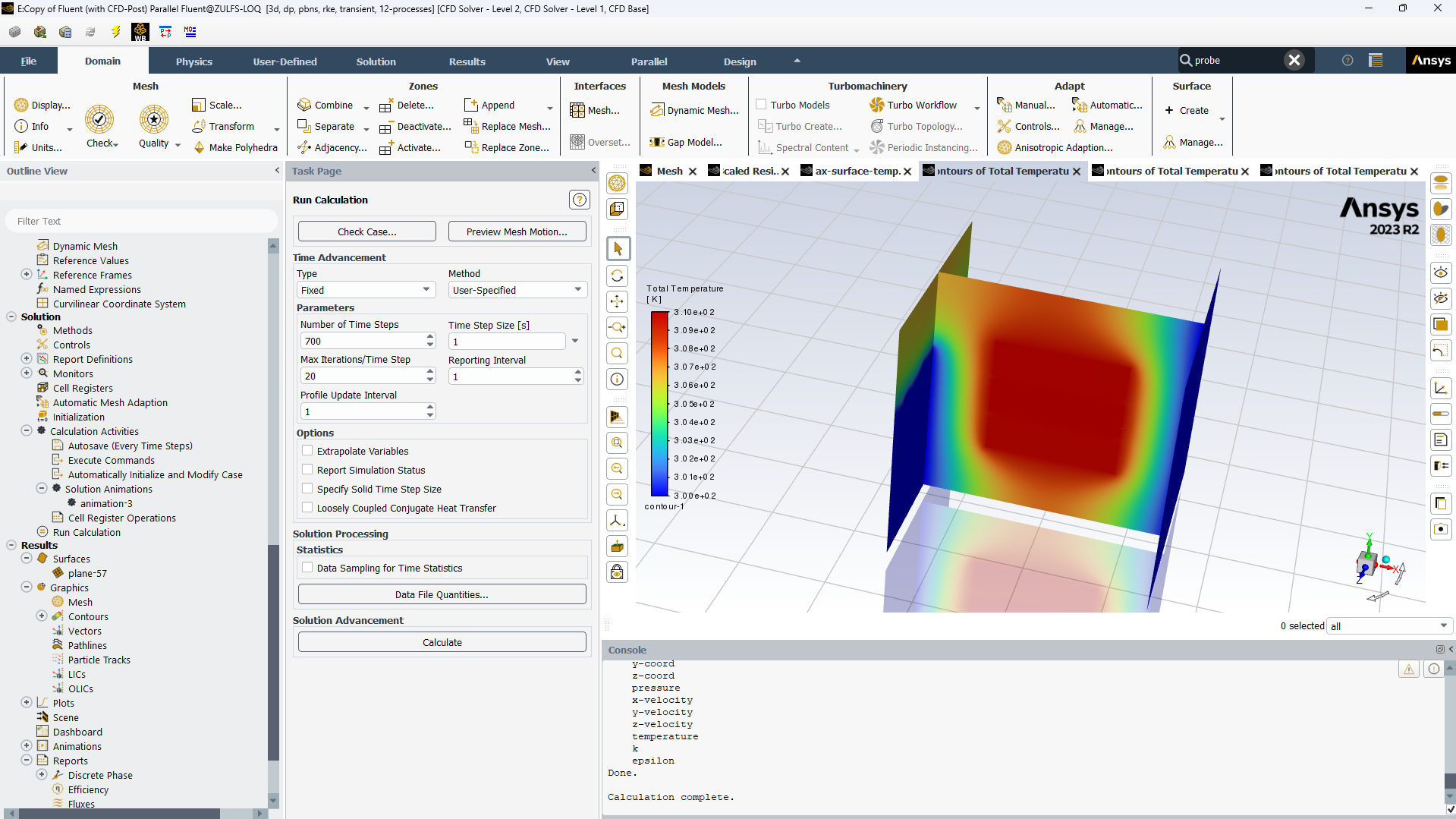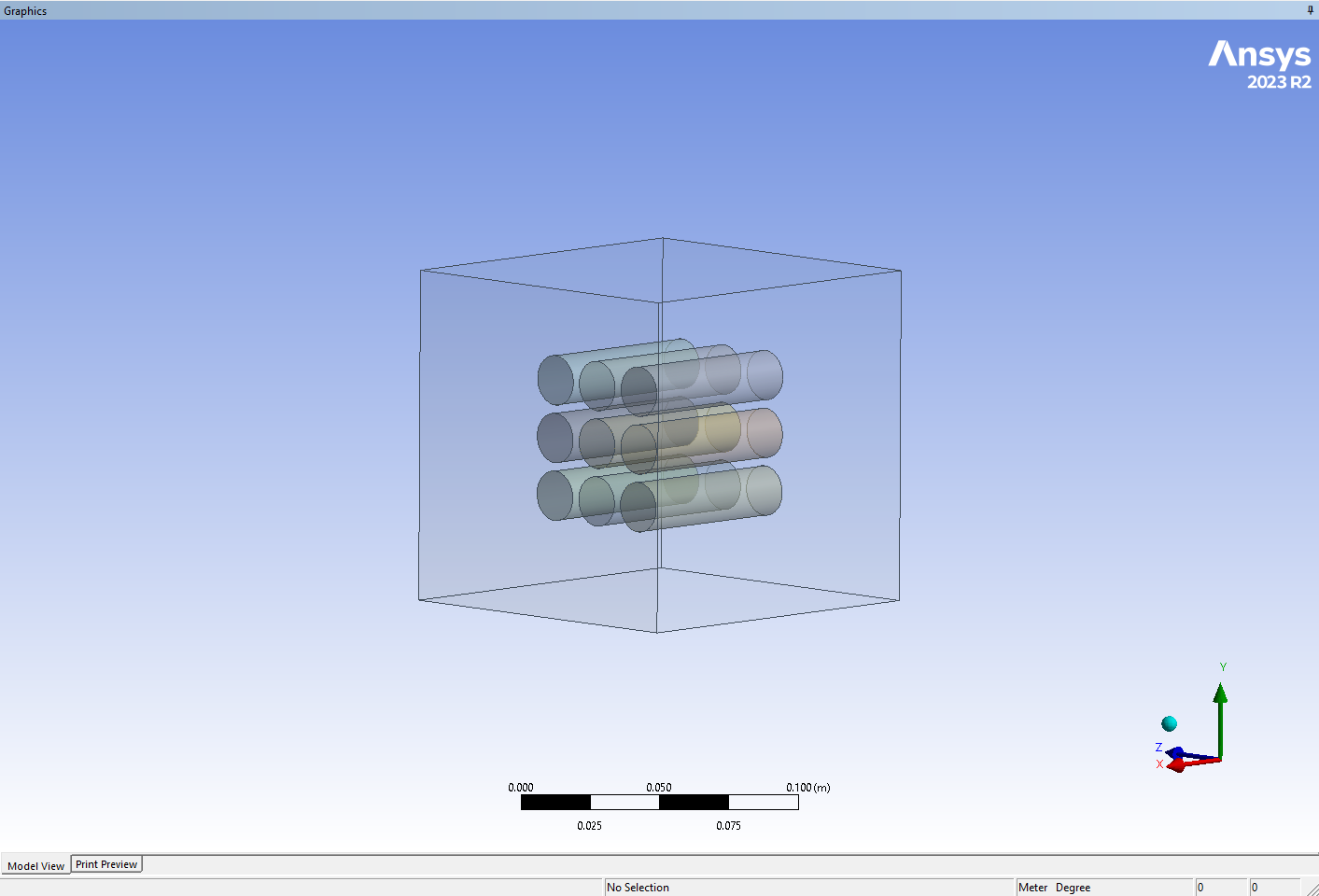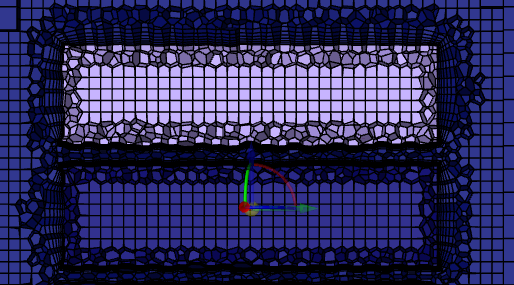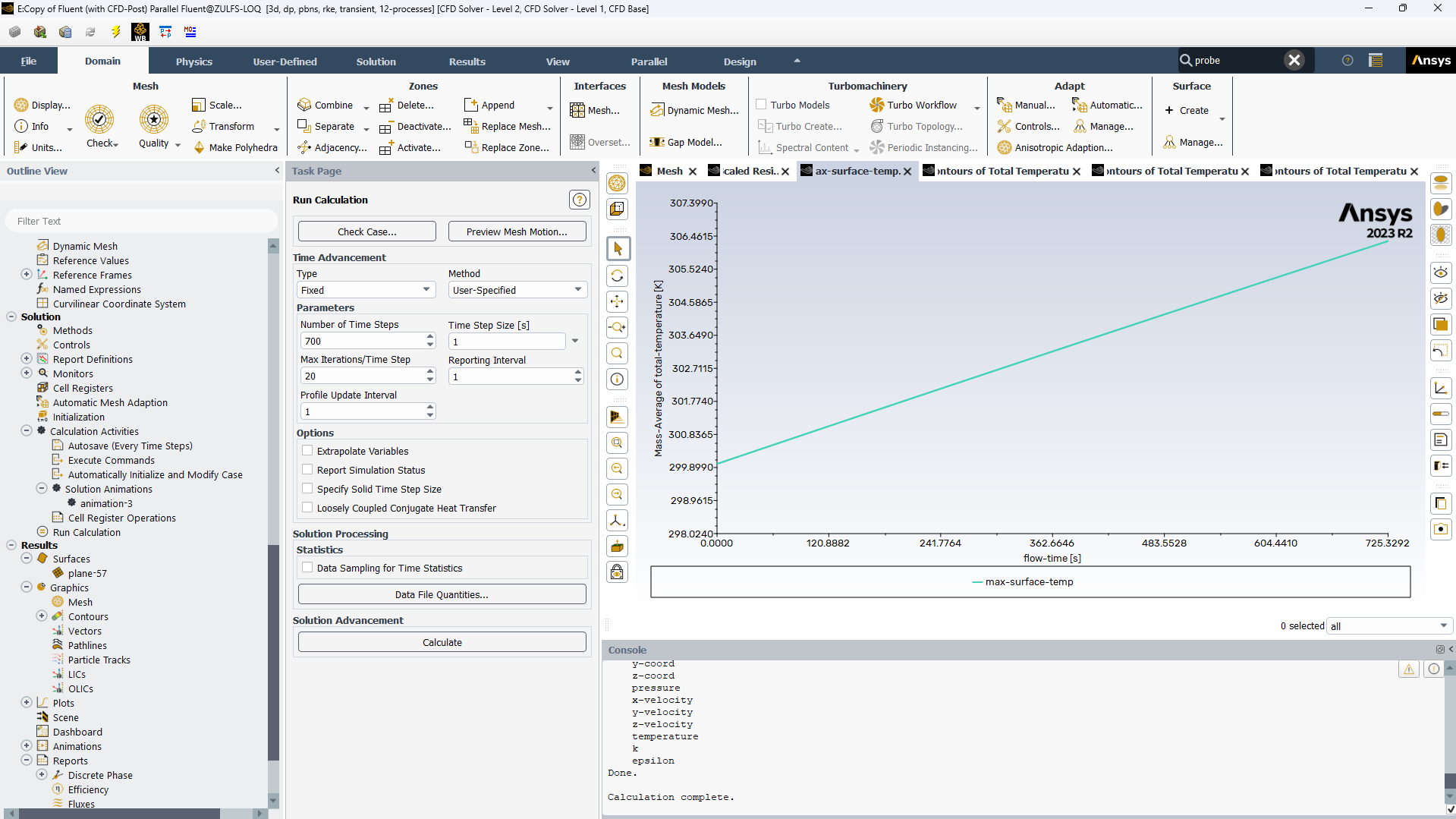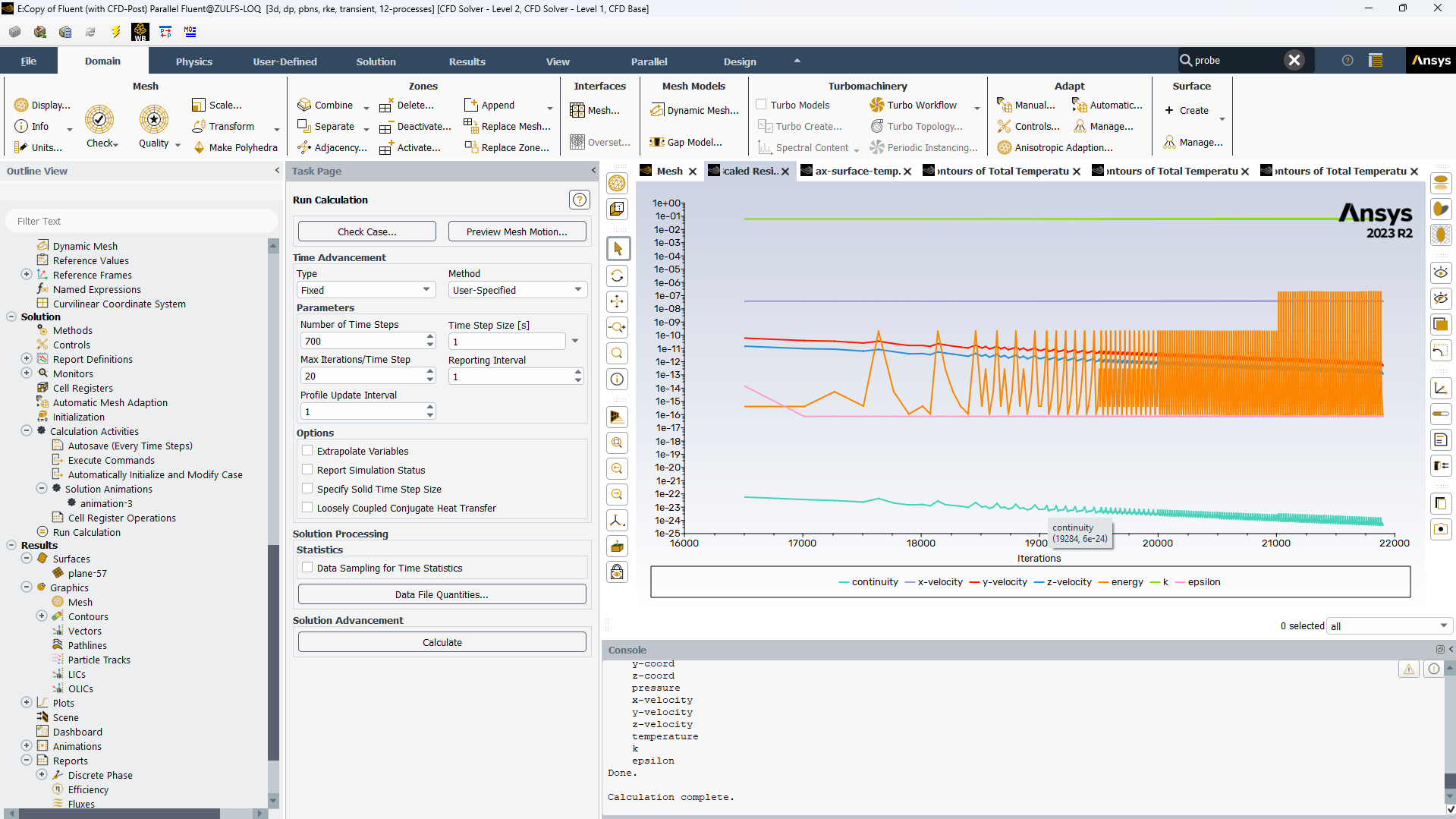-
-
September 6, 2025 at 12:33 pm
zulfikar.jasdanwala23
SubscriberI am performing a conjugate heat transfer (CHT) analysis of a 3s3p battery pack to evaluate the effect of copper plates on thermal management. As a baseline for comparison, I am first analyzing the pack without copper plates.
For validation, I am using data from a research paper that experimentally analyzed a 3s3p pack under a 3C discharge rate. The paper reports a volumetric heat generation of 170,000 W/m³ within the cells, which I have applied as a cell zone heat source in my simulation. At the cell walls, I specified a convective heat transfer coefficient of 5 W/m²K (taken from youtube). The goal is to compare the simulated maximum cell surface temperature with the experimental results to validate the model.
The mesh is done in fluent with 6 layers of inflation.
The simulation setup is transient, run for 700 s with a timestep of 1 s, using the k–ε turbulence model. Inlet and outlet boundary conditions are left at default settings, and all walls are coupled by default.
The issue I am facing is that the cell surface temperature continuously increases linearly with time (as shown below) and does not reach a steady value, even after many timesteps. I tested lower heat generation values -17,000 W/m³(100k lower) and obtained the same trend: the temperature rise was still linear, just at a slower rate.
Despite multiple trials, the temperature evolution always shows this linear rise, and I am unable to stabilize or match it with the experimental results. I need guidance on resolving this issue.
-
September 9, 2025 at 8:44 am
AG
Ansys EmployeeWhere is inlet and oulet located ?
What is the flow rate (do you expect this to be forced convection or natural convection - is gravity enabled)? Is fluid domain created around cell pack a actual flow domain from test (like duct)?
At the cell walls, I specified a convective heat transfer coefficient of 5 W/m²K (taken from youtube). - which boundary is applied with this setting?
-
- You must be logged in to reply to this topic.


- air flow in and out of computer case
- Varying Bond model parameters to mimic soil particle cohesion/stiction
- Eroded Mass due to Erosion of Soil Particles by Fluids
- I am doing a corona simulation. But particles are not spreading.
- Centrifugal Fan Analysis for Determination of Characteristic Curve
- Issue to compile a UDF in ANSYS Fluent
- Guidance needed for Conjugate Heat Transfer Analysis for a 3s3p Li-ion Battery
- JACOBI Convergence Issue in ANSYS AQWA
- affinity not set
- Resuming SAG Mill Simulation with New Particle Batch in Rocky

-
4337
-
1494
-
1375
-
1197
-
1021

© 2025 Copyright ANSYS, Inc. All rights reserved.

